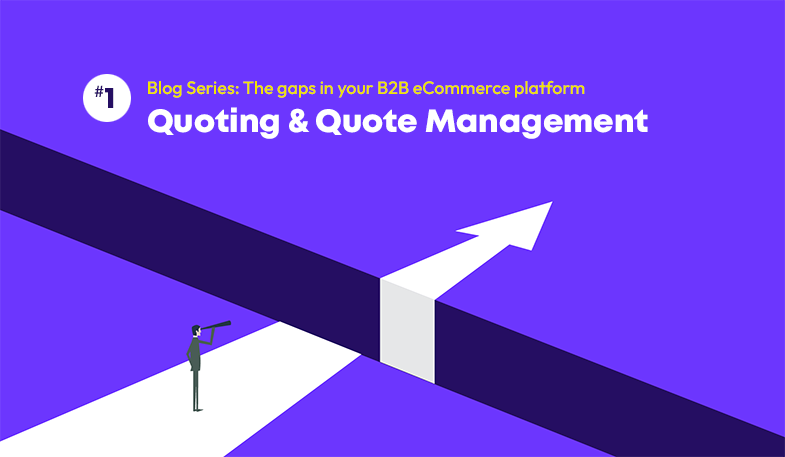4 Crucial Considerations for Implementing an eCommerce Order Management System

All eCommerce managers have their eye on new opportunities to drive more business, build their customer database, and implement new marketing programs to create sales. But what happens after the sale? We’re talking about the order management experience, here. What does your order management look like? Is it supported by your eCommerce platform? Or is it being held back by your platform’s limitations?
Even the most basic order management platforms are responsible for a substantial part of your customer experience, from organizing your inventory to streamlining the ordering process to interfacing with customers.
But like all parts of your eCommerce strategy, you need to constantly review and assess your processes and systems to ensure you’re running as efficiently as possible. And when you finally realize that your company is ready to rethink its order management process, you’ll want to thoroughly review your options. Fortunately, for eCommerce businesses, there’s no better time than now to explore the features and functions in cutting-edge order management systems.
Follow the steps below to make sure this integration goes off without a hitch.
1. Plan the Project
Start with an implementation plan that maps out and organizes the workflow. What responsibilities will your platform have? Are you using a legacy system that can connect to your eCommerce platform? When will you be able to transfer your data? Work with your vendor to discuss the platform’s capabilities, what features are needed, and a reasonable timeline. In our experience, integrating a new order management system from scratch can take six months or more, so get started with these discussions early.
This comes back to the end goal of your implementation, which is improving the customer experience. Chances are, your current platform isn’t meeting your customers’ expectations. Maybe your order processing workflows are slow, leading to long delivery times, or maybe your customer data isn’t well-coordinated, which makes it hard to deliver good service across channels. Also, consider how your current limitations may detract from the customer experience. For example, a sluggish inventory update system that shows certain items as out-of-stock, even though they were recently made available.
Think about the process, from order receipt to box out the door, and look for processing steps that could be eliminated through a better ordering system.
It’s not just a customer service issue–it’s a point of competitive differentiation. In one study, 38 percent of manufacturers agreed that order management would become a top priority for their organizations. If we extrapolate from this, it’s clear that businesses are beginning to see the real value of structured order management tools. The ones who can integrate these solutions seamlessly will have an edge over those who go in blind.
2. Strip the Redundancies
This should technically be part of your implementation plan, but it’s worth mentioning here. Look at what new functionalities your order management platform will provide and see if it’ll create any redundancies in your existing setup.
Modern order management platforms contain multiple features that touch nearly every part of your business including inventory control, payment processing, returns and refunds, order processing and shipping, and more. If you’re upgrading to an order management solution that comes built-in with these functionalities, you can reduce the number of silos in your order processing framework and bring everything together under one convenient umbrella.
3. Configure Integrations
To get the most value out of your order management platform, you’ll need to make sure integrations are coordinated for every system in use. If you’re using an advanced order management platform with features for product information, inventory control, forecasting, or accounting, you’ll need to tie each platform back to your new system.
Make sure you’re aware of these issues before committing to a provider. Some order management options lack flexibility in coordinating with lesser-known integrations, particularly when you start getting into advanced features like marketing or fraud prevention. And if these integrations aren’t handled correctly, you might find that you begin missing sales opportunities due to order updates, tracking info, or order delivery notifications not flowing back into the eCommerce platform.
Look for ways to reduce the number of steps in the ordering process and cut down on these inefficiencies. For example, rather than taking the time to manually look up tracking numbers and sending out update emails, why not create a system where that message could be automatically sent out?
Of course, your vendor will work with your IT teams and do the heavy lifting here—but on the management side, make sure all expectations are clear ahead of time. Any misunderstandings here translate to huge increases in implementation costs, schedules, and overall time to deployment.
4. Looking Beyond eCommerce
Your order management system should support a seamless buying process for customers across each of their preferred sales channels, but keep in mind that order management also affects your non-eCommerce purchases. Customers doing their shopping in-store need accurate inventory information just as much as online shoppers, and if this information isn’t readily available in your POS software, it can seriously detract from their shopping experience–and your revenue.
Work with your provider to integrate as many sales channels as you need, including your desktop shopping experience, mobile ordering experience, and in-store POS integration. An integrated eCommerce experience means joining all of these channels together and having whatever data on hand that your customers might need, no matter where they need it.
And while you’re at it, make sure your employees have the training they need to access this data in your new system. To be on the safe side, we recommend that you budget for at least twice as long of an onboarding process as you think you need.
A quality vendor will walk you through the platform, compare the differences, and provide additional training documents for your team to reference later.
Fast and Efficient Order Management
One last tip for you: Don’t think of your order management platform integration as a responsibility for only your IT team. Order management encompasses every facet of your shopping experience, from IT integrations to sales management to your customer service reps. It’s a critical part of creating a quality buyer experience—something that 45 percent of companies agree is a top priority.
Follow the above steps and you’ll be surprised at how easy your order management integration can be. With a little bit of forethought, your platform will be up and running in no time.
Resource Center

A new blog series about the critical eCommerce capabilities missing in most eCommerce platforms for B2B companies. #1: Quoting & Sales Support

A closer look from the Ultra perspective on what we really mean when we talk about headless commerce and why it may not be right for every company.

Davis Art is now the only online K-12 publisher dedicated to the arts, creating top-notch curriculum and resources for art educators nationwide, all from the Ultra Commerce platform.
